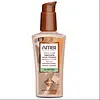What's inside
What's inside
 Key Ingredients
Key Ingredients

 Benefits
Benefits

 Concerns
Concerns

 Ingredients Side-by-side
Ingredients Side-by-side

Benzoyl Peroxide 4%
Carbomer
Emulsion StabilisingDecyl Glucoside
CleansingDimethicone
EmollientDiheptyl Sodium Sulfosuccinate
CleansingGlycerin
HumectantPalmitic Acid
EmollientPolyacrylate Crosspolymer-6
Emulsion StabilisingPEG-40 Stearate
EmulsifyingPropanediol
SolventWater
Skin ConditioningSilica
AbrasiveSodium Chloride
MaskingSodium Citrate
BufferingSodium Hydroxide
BufferingSodium Laurylglucosides Hydroxypropylsulfonate
CleansingSorbitan Stearate
EmulsifyingSorbitol
HumectantStearic Acid
CleansingT-Butyl Alcohol
PerfumingXanthan Gum
EmulsifyingBenzoyl Peroxide 4%, Carbomer, Decyl Glucoside, Dimethicone, Diheptyl Sodium Sulfosuccinate, Glycerin, Palmitic Acid, Polyacrylate Crosspolymer-6, PEG-40 Stearate, Propanediol, Water, Silica, Sodium Chloride, Sodium Citrate, Sodium Hydroxide, Sodium Laurylglucosides Hydroxypropylsulfonate, Sorbitan Stearate, Sorbitol, Stearic Acid, T-Butyl Alcohol, Xanthan Gum
Water
Skin ConditioningAloe Barbadensis Leaf Juice
Skin ConditioningCocamidopropyl Betaine
CleansingSodium Lauroyl Methyl Isethionate
CleansingGlycerin
HumectantIpomoea Batatas Extract
Skin ConditioningChamomilla Recutita Extract
Skin ConditioningCamellia Sinensis Extract
AntioxidantPropanediol
SolventRetinyl Palmitate
Skin ConditioningCopper Sulfate
Skin ConditioningTocopheryl Acetate
AntioxidantCalendula Officinalis Extract
Skin ConditioningPEG-12 Dimethicone
Skin ConditioningBixa Orellana Pulp Extract
MaskingCitric Acid
BufferingPhenoxyethanol
PreservativeEthylhexylglycerin
Skin ConditioningWater, Aloe Barbadensis Leaf Juice, Cocamidopropyl Betaine, Sodium Lauroyl Methyl Isethionate, Glycerin, Ipomoea Batatas Extract, Chamomilla Recutita Extract, Camellia Sinensis Extract, Propanediol, Retinyl Palmitate, Copper Sulfate, Tocopheryl Acetate, Calendula Officinalis Extract, PEG-12 Dimethicone, Bixa Orellana Pulp Extract, Citric Acid, Phenoxyethanol, Ethylhexylglycerin
 Reviews
Reviews

Ingredients Explained
These ingredients are found in both products.
Ingredients higher up in an ingredient list are typically present in a larger amount.
Glycerin is already naturally found in your skin. It helps moisturize and protect your skin.
A study from 2016 found glycerin to be more effective as a humectant than AHAs and hyaluronic acid.
As a humectant, it helps the skin stay hydrated by pulling moisture to your skin. The low molecular weight of glycerin allows it to pull moisture into the deeper layers of your skin.
Hydrated skin improves your skin barrier; Your skin barrier helps protect against irritants and bacteria.
Glycerin has also been found to have antimicrobial and antiviral properties. Due to these properties, glycerin is often used in wound and burn treatments.
In cosmetics, glycerin is usually derived from plants such as soybean or palm. However, it can also be sourced from animals, such as tallow or animal fat.
This ingredient is organic, colorless, odorless, and non-toxic.
Glycerin is the name for this ingredient in American English. British English uses Glycerol/Glycerine.
Learn more about GlycerinPropanediol is an all-star ingredient. It softens, hydrates, and smooths the skin.
It’s often used to:
Propanediol is not likely to cause sensitivity and considered safe to use. It is derived from corn or petroleum with a clear color and no scent.
Learn more about PropanediolWater. It's the most common cosmetic ingredient of all. You'll usually see it at the top of ingredient lists, meaning that it makes up the largest part of the product.
So why is it so popular? Water most often acts as a solvent - this means that it helps dissolve other ingredients into the formulation.
You'll also recognize water as that liquid we all need to stay alive. If you see this, drink a glass of water. Stay hydrated!
Learn more about Water